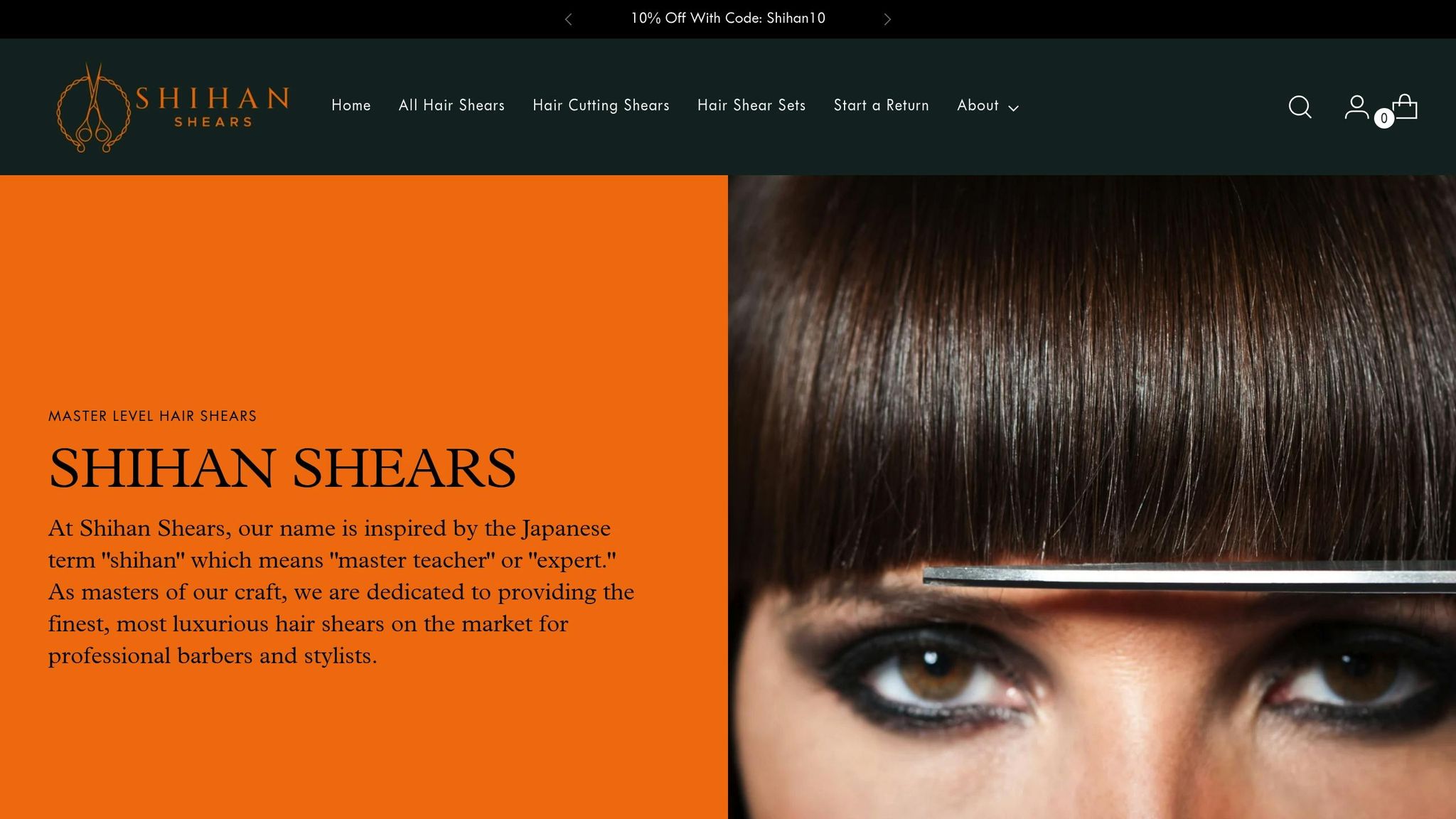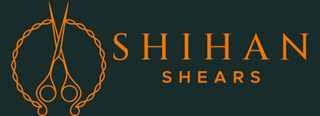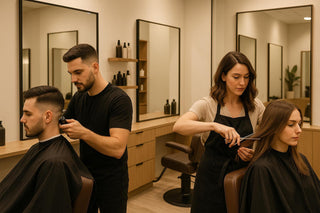Barbering and salon cutting cater to different hair needs, but combining their techniques creates versatile, modern styles. Barbers excel in short cuts, fades, and facial hair grooming, while salon stylists focus on longer hair, layering, and chemical treatments. Today, professionals often blend these methods to meet diverse client preferences.
Key Differences:
- Barbershops: Clippers, sharp fades, short styles, relaxed atmosphere, primarily men-focused.
- Salons: Scissors, layering, coloring, luxurious/trendy vibe, diverse clientele.
Quick Comparison:
| Aspect | Barbershops | Salons |
|---|---|---|
| Primary Tools | Clippers, straight razors | Scissors, styling tools, chemicals |
| Core Services | Short cuts, fades, facial grooming | Long cuts, layers, coloring |
| Atmosphere | Community-focused, relaxed | Luxurious to trendy |
| Client Base | Traditionally men-focused | Diverse clientele |
Key Methods: Comparing Barber and Salon Techniques
Clippers vs. Scissors: Main Differences
Barbers and salon stylists often use different tools to achieve their results. Barbers typically lean on clippers, ideal for short styles, fades, and sharp edges. On the other hand, salon stylists prefer scissors, which allow for shaping, layering, and creating softer, more textured looks.
Here’s a quick comparison of the two techniques:
| Aspect | Clipper Technique | Scissor Technique |
|---|---|---|
| Precision Level | Consistent, mechanical cuts | Handcrafted, detailed cuts |
| Best For | Short styles, fades, clean lines | Longer styles, layers, texture |
| Hair Type Handling | Great for thick hair | Works well on all hair types |
| Growth Pattern | Regrowth is more noticeable | Regrowth blends naturally |
| Correction Ease | Harder to fix mistakes | Easier to adjust and refine |
These distinctions highlight how each method serves different purposes, making them better suited for specific styles and hair types.
What Each Method Does Best
Clippers:
- Perfect for sharp fades and tapers
- Handle thick hair with ease
- Allow for detailed designs and geometric patterns
- Provide consistent results for short, uniform styles
Scissors:
- Ideal for creating natural layers
- Help control volume and enhance movement
- Adapt to the shape of the head for a custom fit
- Allow for small, precise adjustments
The choice between clippers and scissors depends on the style you're aiming for. For example, scissors are excellent for curly or fine hair, especially when dry cutting, as they offer better control over natural movement. Many modern stylists combine both techniques to blend sharp edges with softer, more textured finishes.
Barber Hair Scissor Channel Cutting Techniques
Professional Tools for Both Methods
Barbers and salon stylists depend on top-tier tools to execute their specialized techniques effectively.
Essential Tools for Professionals
Certain tools are indispensable for both barbers and stylists. For example, high-quality shears made from Japanese steel are crucial, delivering precise cuts and lasting durability.
| Tool Type | Primary Use | Key Features |
|---|---|---|
| Cutting Shears | Main cutting tool | Japanese steel, 5.5–6.8 inches |
| Thinning Shears | Texture and blending | 30–40 teeth, same steel quality |
| Texturizing Tools | Adding movement | Sharp blades, ergonomic handle |
| Combs | Sectioning and control | Heat-resistant, fine teeth |
| Clips | Section management | Strong grip, rust-proof |
These tools are the foundation for achieving professional results, making both selection and maintenance critical.
Shihan Shears Product Guide

Some tools stand out for their versatility. For instance:
- The 5.75-inch Meister Shears are ideal for detailed precision work.
- The 6.8-inch Legacy Set handles both intricate and broader cuts with ease.
When choosing shears, consider:
- Hand size: Ensures comfort and control.
- Blade length: Matches the cutting technique.
- Steel quality: Japanese steel offers unmatched sharpness and durability.
Proper maintenance ensures these tools keep performing at their best.
Caring for Your Tools
Maintaining professional-grade shears is essential to preserve their sharpness and functionality. Here’s how to keep them in top shape:
- Daily cleaning: Wipe the blades after every use.
- Regular oiling: Apply the recommended oil daily to prevent rust and maintain smooth operation.
- Tension checks: Adjust the tension weekly for optimal performance.
- Professional sharpening: Always use authorized services to maintain the blade's integrity.
While budget scissors may last just a few months, high-quality Japanese steel shears can last for years with proper care. Though they may cost up to $1,000 initially, their durability and consistent performance make them a smart long-term investment.
sbb-itb-a50b05d
Combined Cutting Styles and Methods
By merging barbering and salon techniques, hairstylists can craft modern, versatile cuts that stand out.
Top Mixed-Method Haircuts
Today's popular styles often combine the precision of clippers with the artistry of scissors. Here are two prime examples:
Textured Crop Fade
This style pairs a sharp fade at the sides with textured layers on top, creating movement without losing structure. It's especially suited for thick hair and highlights the seamless use of both tools.
Layered Undercut
With a clean, sharp undercut achieved by clippers and scissor-shaped layers on top, this cut balances precision and smooth transitions between sections.
| Style Element | Technique | Tool |
|---|---|---|
| Base Structure | Clipper fade | Clippers |
| Top Length | Point cutting | Cutting shears |
| Texture | Slithering | Thinning shears |
| Blending | Scissor-over-comb | Both tools |
These examples highlight how combining methods can produce polished, professional results.
How to Mix Cutting Methods
Foundation Work
Start with damp hair for scissor cutting. For clipper-over-comb techniques, the hair should be slightly damp.
Blending Techniques
Use a smooth, scooping motion with clippers to prevent harsh lines. Follow up with scissors to soften edges and ensure a natural look as the hair grows out.
Texture Integration
For thicker hair, remove excess bulk with clippers and then use point cutting to add texture. Adjust the depth and width of the cuts to keep the base even.
Finishing Details
Dry cutting works best for refining shapes, especially for curly or wavy hair types.
This combination of methods not only enhances technical skills but also bridges the gap between classic barbering and contemporary salon techniques.
Conclusion: Combining Both Skills
Key Takeaways
Today's hairstyling world requires expertise in both barbering precision and salon artistry. To excel, focus on mastering core techniques from each field. Barbers specialize in sharp fades, while stylists bring creative shaping and layering to the table.
| Skill Area | Barbering Focus | Salon Focus | Combined Advantage |
|---|---|---|---|
| Tool Mastery | Proficiency with clippers | Precision with scissors | Broader cutting capabilities |
| Technique | Fading and tapering | Layering and texturing | Full control over styles |
| Client Service | Quick, accurate cuts | In-depth consultations | Improved client experience |
By blending these skills, hairstylists can set the foundation for ongoing growth and adaptability in their craft.
Steps to Sharpen Your Skills
To build on the combined techniques outlined above, expanding your expertise is crucial. Start by equipping yourself with high-quality tools - professional-grade shears like the 5.75-inch Meister Shears are excellent for handling both barbering and salon tasks.
"The work better done by one or another professional has to do with the skill and determination of the professional. Some hairstylists can fade better than some barbers. And some barbers have more knowledge, practice, and talent in color than some hairstylists and cosmetologists".
Here’s how to refine your craft:
- Core Techniques: Perfect essential methods like scissor-over-comb and clipper-over-comb.
- Workshops: Participate in sessions that teach hybrid techniques.
- Current Styles: Stay updated on modern, blended trends.
- Tool Maintenance: Regular care ensures tools perform at their best.
With focus and dedication, mastering both barbering and salon skills is entirely achievable.
FAQs
What are the benefits of blending barbering and salon cutting techniques for hairstylists and their clients?
Blending barbering and salon cutting techniques allows hairstylists to expand their expertise and offer a wider range of services to clients. By combining the precision and clean lines of barbering with the texture and softer finishes often seen in salon cutting, stylists can create versatile, modern hairstyles that cater to diverse preferences.
This approach not only helps hairstylists adapt to evolving trends but also enhances their ability to meet the unique needs of each client. Whether it’s mastering tools like professional-grade shears for sharp detailing or incorporating advanced texturizing techniques, integrating these disciplines ensures a more dynamic and personalized experience for clients.
How can I properly maintain my shears for both barbering and salon cutting?
To keep your shears in top condition, it's essential to follow a consistent maintenance routine. Daily cleaning is crucial to remove hair, residue, and moisture. Apply a few drops of oil to the pivot point weekly to ensure smooth operation and prevent rust. Monthly deep cleaning with a disinfectant, followed by reapplying oil, helps maintain hygiene and longevity.
Additionally, check and adjust the tension regularly to avoid unnecessary wear. Have your shears professionally sharpened every 6–12 months, depending on usage. Finally, always store them in a protective case to prevent damage when not in use. These steps will ensure your shears perform at their best and last for years to come.
When should hairstylists use clippers versus scissors in a haircut?
Hairstylists decide between clippers and scissors based on the style, hair type, and desired finish. Clippers are ideal for shorter cuts, creating clean lines, removing bulk efficiently, and achieving a sharp, uniform look. On the other hand, scissors are perfect for precision work, detailing, and adding softer, more natural textures, especially for longer hairstyles.
Many professionals combine both tools to create modern, versatile styles, blending the efficiency of clippers with the artistry of scissors for a polished result. The key is understanding the client’s needs and tailoring the approach to achieve the best outcome.

